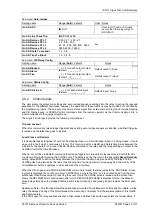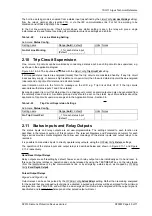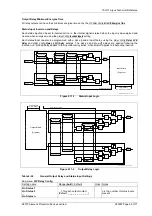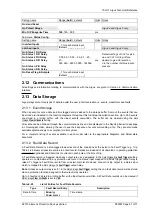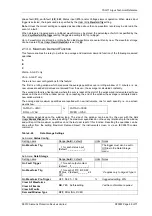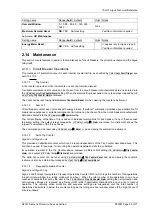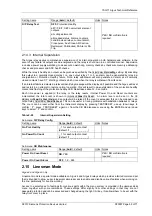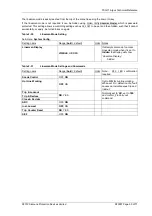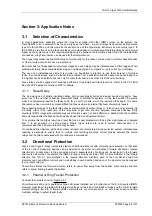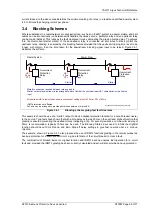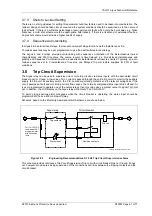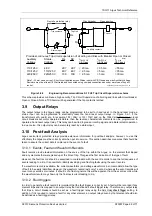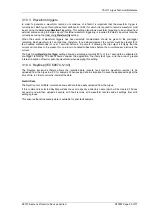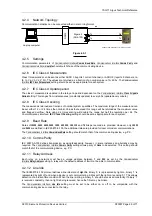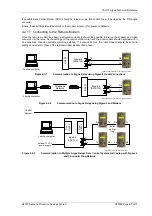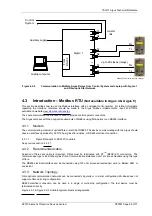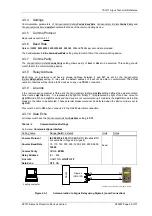
7SG11 Argus Technical Reference
©2013 Siemens Protection Devices Limited
P20007 Page 54 of 71
Section 3: Application Notes
3.1 Selection of Characteristics
In most applications, especially where the relay must grade with other IDMTL relays on the system, the
characteristic curve is selected to be the same type as the others - e.g. most relays have normal inverse curves
type A to IEC 60255-3 and this would be the usual choice on the Argus relay. Extremely inverse curves type C to
IEC 60255-3 are often used to grade with fuses or moulded case circuit breakers. Operating times become slower
higher up the system due to the required grading margins between characteristics and VI and NI characteristics
are needed. Long Time Inverse can be used for thermal protection.
The Argus relay measures true RMS values of current and for this reason can be used to protect capacitor banks
or other circuits where harmonics are significant.
Each pole has four independent overcurrent stages and each stage may be instantaneous or time lagged. When
grading with fuses, these characteristics may be combined to give a composite curve to correctly co-ordinate.
The use of an instantaneous element is common on transformer protection to give fast clearance of terminal
faults. In some instances, such as a feeder that is cabled from a substation and then becomes an overhead line,
the highset can be selected to operate only for cable faults and can be utilised to block auto-reclosing.
Argus relays can be supplied with sensitive earth-fault or restricted earth-fault functions. Refer to the VA TECH
Reyrolle ACP Application Guide on REF for details.
3.1.1 Reset Delay
The increasing use of plastic insulated cables, both conventionally buried and aerial bundled conductor, have
given rise to the number of flashing intermittent faults on distribution systems. At the fault position the plastic
melts and temporarily reseals the faulty cable for a short time after which the insulation fails again. The same
phenomenon has occurred in compound-filled joint boxes where an internal flashover temporarily reseals.
The repeating process of the fault often causes electromechanical disc relays to “ratchet” up and eventually trip
the faulty circuit if the reset time of the relay was longer than the time between successive flashes. Early
electronic IDMTL relays with instantaneous reset features were not at all effective in dealing with this condition
and only tripped after the flashing fault had developed into a solid permanent fault.
To overcome this the Argus relay has a reset that can be user programmed to be either instantaneous or delayed
from 1 to 60 seconds in 1-second steps. Where Argus relays are used to protect cable feeders, it is
recommended that a 60 second reset delay be used.
On overhead line networks, particularly where reclosers are incorporated in the protected system, instantaneous
resetting is desirable to ensure that, on multiple shot reclosing schemes, correct grading between the source
relays and the relays associated with the reclosers is maintained.
3.2 Directional Protection
Argus 2 and Argus 6 relays incorporate discrete directional elements with comprehensive selection so that each
of the 4 current measuring devices can be selected to be either non-directional, forward directional, reverse
directional or bi-directional. In the bi-directional mode, separate sets of settings can be assigned to the forward
and reverse elements. For example, the IDMTL function could be set to be 100% 0.4 time multiplier in the forward
direction and 15% 0.1 time multiplier in the reverse direction. Similarly, each of the Low Set and High Set
elements can have different current and time settings in each direction and each of the elements can be mapped
to any output relay(s).
Convention dictates that forward direction refers to power flow away from the busbar, while reverse direction
refers to power flowing towards the busbar.
3.2.1 Parallel or Ring Feeder Protection
Consider the network shown in Figure 3.2-1.
Circuit breakers at E and G would have Argus 2/6 relays installed, set to bi-directional. The E & G reverse IDMTL
elements must be set to grade with the forward settings on the load circuit breaker relays and the C & D forward
element settings; the E & G forward IDMTL elements are set more sensitive, i.e. with lower current and time
multiplier settings to detect feeder faults.




